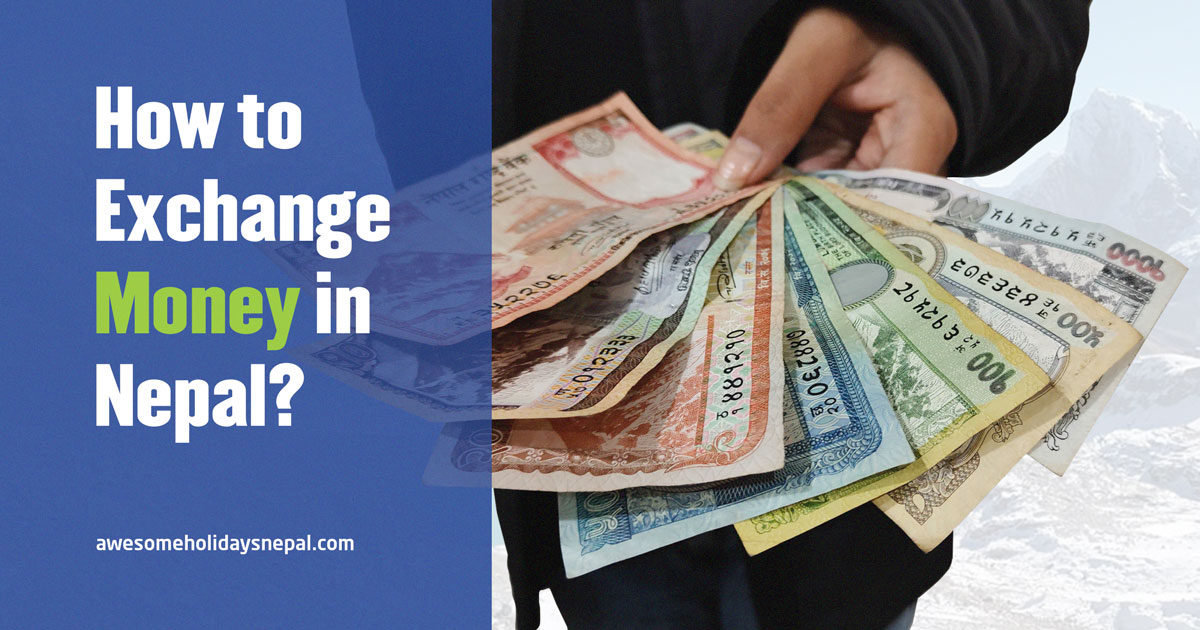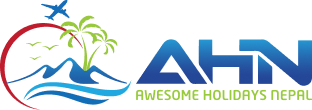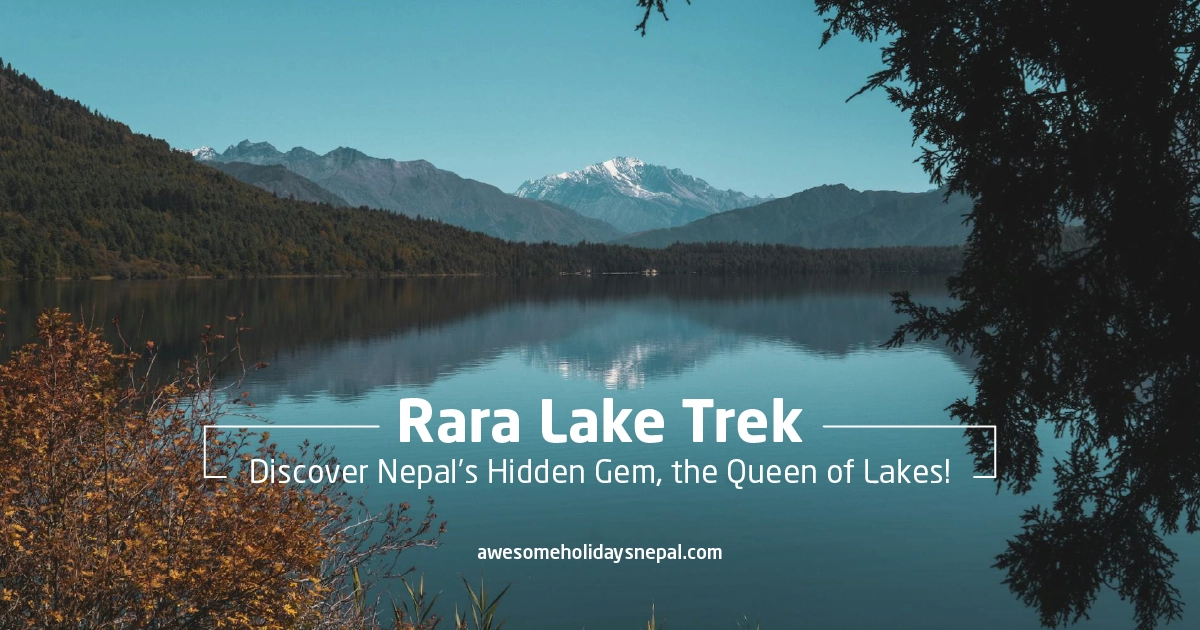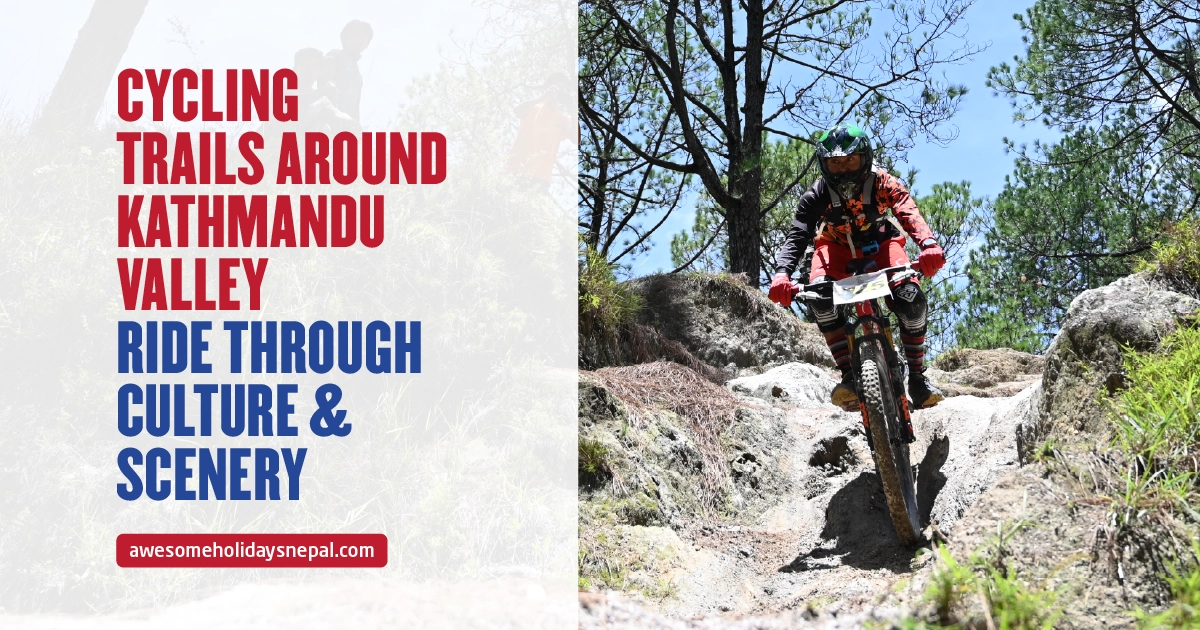Currency, ATMs, and Money Exchange Rate in Nepal: A Complete Guide for Travelers

When traveling to Nepal, understanding the banking system, money exchange rate in Nepal, and various aspects of monetary transactions is essential for a smooth trip.
Whether you’re exploring the bustling streets of Kathmandu or trekking in the Himalayas, managing your money efficiently will help you avoid unnecessary hassles. One important thing to know about Nepal before coming here is about the currency.
Let’s discuss the currency, ATMs in Nepal, banks, money transactions, and money exchange systems in Nepal. This guide covers everything you need to know about understanding
Understanding Nepalese Currency
The official currency of Nepal is the Nepalese Rupee (NPR), denoted as Rs or ₨. The Nepal Rastra Bank issues and controls the monetary systems and every bank in Nepal. The country uses banknotes in denominations of 1, 2, 5, 10, 20, 50, 100, 500, and 1,000 rupees, while coins include 1, 2, 5, and 10 rupees but are rarely used.

Exchange Rate in Nepal
The exchange rate in Nepal is controlled by the Nepal Rastra Bank against the dollar. As a reference, 1 USD is roughly 139 NPR, but it’s better to check the latest rates online as they fluctuate daily.
Where and How to Exchange Money in Nepal
You can exchange foreign currency at various places in Nepal, including:
- Banks: The commercial banks of Nepal offer you official exchange rates in Nepal but might require you to wait in a long queue.
- Tourist hubs like Thamel and Pokhara have hundreds of Money Exchange Counters that offer you competitive rates but charge a small commission.
- Some hotels may exchange money, but they offer very low rates.
- The international airport in Kathmandu, the Tribhuvan International Airport, has some exchange counters, but their rates may not be the best.
Tips for Exchanging Money in Nepal
- Visit only the authorized banks or money exchange counters for the best exchange rates in Nepal. You may encounter some individuals on the street asking to do so for you.
- Usually, the exchange rates are low at the airport, as rates are usually lower.
Always carry smaller denominations like Rs. 10, Rs. 20, or Rs. 50 for easier transactions. - Do not forget to count the cash and recheck the authenticity of the currency.
- In case you need to return the cash, you will need to keep exchange receipts.
- Avoid exchanging money with individuals on the street to prevent scams or counterfeit currency.
ATMs in Nepal, and PINs
Every bank in Nepal has installed their ATMs in major parts of the country. Though the major commercial banks have expanded their services and established sub-branches in major towns and headquarters of the districts, ATMs are still not in use.
ATMs are widely available in Kathmandu, Pokhara, Chitwan, and other major cities, but they become scarce in remote trekking areas. During the Everest Base Camp trip, there are ATMs in Lukla and Namche Bazar. Similarly, there are some ATMs in Jomsom, one of the popular destinations of the Annapurna Sanctuary.
Some ATMs in Nepal may not accept 6-digit PINs from foreign cards, so travelers should check with their banks before traveling. Most of the banks in some countries like China, Hong Kong, Singapore, Malaysia, Brazil, and India use six-digit pins for more security.

Pros of Using ATMs in Nepal
An automated teller machine (ATM) is an electronic banking outlet that allows customers to complete basic transactions and withdraw cash.
Some cons of using ATMs are discussed below:
- ATMs are more convenient and widely available in cities and tourist hubs.
- Transactions through ATMs are safer than carrying large amounts of cash, which reduces the risk of theft.
- ATMs usually provide more competitive exchange rates in Nepal than exchange counters.
- ATMs are accessible 24/7, and you do not need to wait for banking hours.
Cons of Using ATMs in Nepal
- Withdrawing from foreign cards can be costly and may charge NPR 500-750 per transaction.
- Most ATMs have lower transaction limits, i.e., limit withdrawals to NPR 35,000-50,000 per transaction.
- Especially in peak tourist seasons in remote areas, the machines may run out of cash.
- Some banks may block foreign transactions for security reasons.
- Finding an ATM in rural areas while trekking can be difficult.
Tips for Using ATMs in Nepal
- It’s better to withdraw in larger amounts to minimize transaction fees, time and again.
- Use ATMs attached to major banks (like Nabil, Standard Chartered, or Global IME) for reliability and higher limits.
- Always carry some cash in case the card malfunctions or the ATM runs out of cash.
- Always keep your card in isolated areas to reduce the risk of skimming fraud.
Inform your bank about your travel destination to prevent your card from getting blocked. - Keep the printed ATM receipt with you for any additional charges in Nepal.
ATM Withdrawal Limits & Fees
Most ATMs allow a maximum withdrawal of NPR 35,000-50,000 per transaction. Some ATMs charge NPR 250 to 750 per withdrawal for foreign cards. The charge may differ as per the services provided by the individual banks. ATMs from Nabil Bank, Standard Chartered Bank, and Global IME Bank are preferred for higher withdrawal limits and lower fees.
The charges for using ATMs in Nepal depend on the types of banks in Nepal. Most of the banks in Nepal take a service charge for inter-banking transactions.
| S. No. | Particulars | Charges |
| 1 | ATM of same Bank | Free |
| 2 | From ATM of other Banks | NPR 15 |
| 3 | From ATMs of Other International Bank | NPR 250 |
| S. No. | Particulars | Limit |
| 1 | Per Transaction in Nepal | 25,000 |
| 2 | Per Day in Nepal | 100,000 |
| 3 | Per Month in Nepal | 400,000 |
| Transaction Type | Limits in Nepal | Limit |
| ATM | Per Transaction | 35,000 |
| Per Day | 200,000 | |
| Per Month | 400,000 | |
| Note: The maximum cash withdrawal allowed from an ATM using a credit card is 10% of the credit limit. This limit will only apply if this condition is met. | ||
International Money Transfers
When you are in Nepal, away from your home, receiving and sending money is not a problem now. There are many options for sending or receiving money. Some of them are:
- Western Union Money Exchange and MoneyGram are faster but expensive.
- Bank Wire Transfer, also called SWIFT, is a reliable method but may take a few days.
- Online payment services like PayPal, Wise, Revolut, etc. are used globally but are not widely supported by Nepali banks.
Credit and Debit Card Usage
Though most of the hotels, restaurants, and shopping malls in cities accept Visa, Mastercard, and American Express, cash is preferred in most places. Small shops, cafes, transportation, and almost every transaction in remote areas is done by cash. When you are traveling to a remote place, always carry some cash with you.
Mobile Payment Options in Nepal
Nepal is gradually adopting digital payments. Mobile wallets such as eSewa, Khalti, and FonePay are widely used, but their respective apps must be installed on your mobile phone and your user ID must be verified to do the transactions. ConnectIPS is another centralized banking system where many banks can be interconnected for the transaction of money. But one must have an official bank account in Nepal.
Safety Tips for Handling Money in Nepal
- Use a money belt or hidden pouch to hide your cash.
- Do not carry a large sum of cash at once.
- Be aware of fake currency. Check the safety marks and security features on larger denominations.
- Withdraw money from reputable ATMs in Nepal only.
- Do not share your PIN with strangers.
- Split your money into different places (wallet, backpack, and hotel safe) to minimize risks
Get a Smooth Travel with Right Currencies
Knowledge about the money exchange counters, ATMs, and banking services is essential for a smooth travel experience in Nepal. Major cities like Kathmandu and Pokhara offer multiple options for exchange counters, banks, and ATMs.
When talking about remote villages, such modern facilities are not available. Hence, carrying some cash in hand is always a good idea.
Planning ahead can save you unnecessary expenses and help you manage your budget during your trip to Nepal. Be mindful of exchange rates in Nepal and ATM withdrawal limits from the official sites of banks.
Being in Nepal and choosing an affordable trekking planner like Awesome Holidays Nepal can always provide you with the best experiences at the most affordable price. With us, you can enjoy a hassle-free journey without financial worries.
Safe travels and happy exploring!
Related blog posts
Discover a choice of tourist destinations loved by most of our visitors. Whether you're on a jungle safari to spot rare animals or walking through a world heritage site, these well-planned itineraries cover the major highlights of Nepal.




